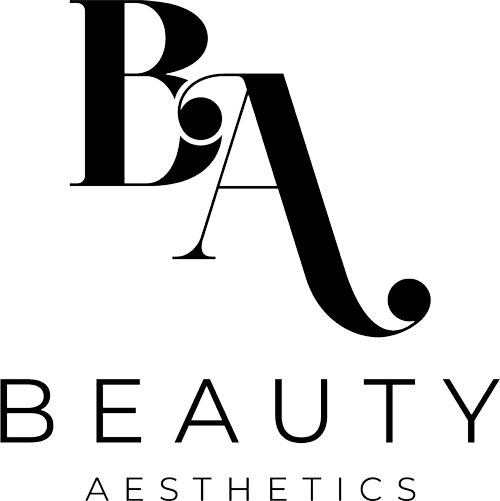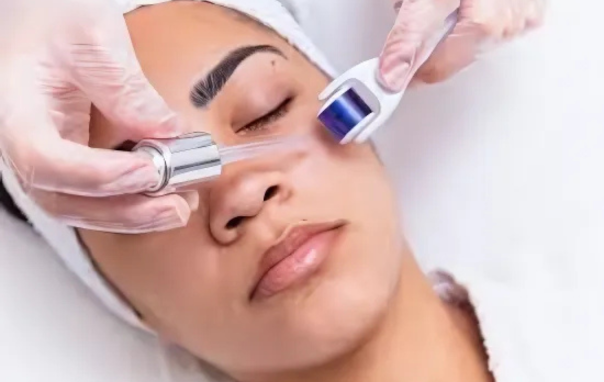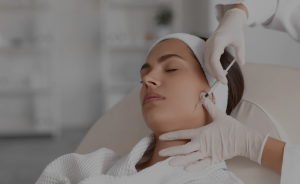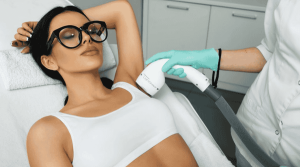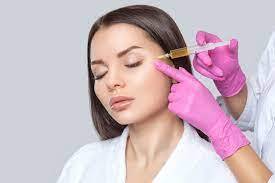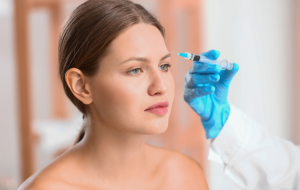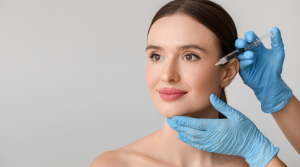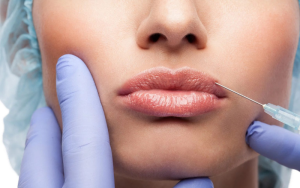In the realm of modern aesthetic medicine, few cosmetic procedures generate as much buzz as the platelet-rich plasma (PRP) facial. This facial treatment harnesses the healing properties of your own blood—specifically the fraction of blood known as the liquid portion containing high-concentration of platelets. By leveraging naturally occurring growth factors, PRP offers an effective treatment for wrinkles, sun damage, and other skin conditions. For many patients, PRP provides a natural treatment alternative to invasive procedures like plastic surgery or dermal fillers. Below, we’ll explore how PRP works, the benefits of platelet therapy, and real-world outcomes you can expect.
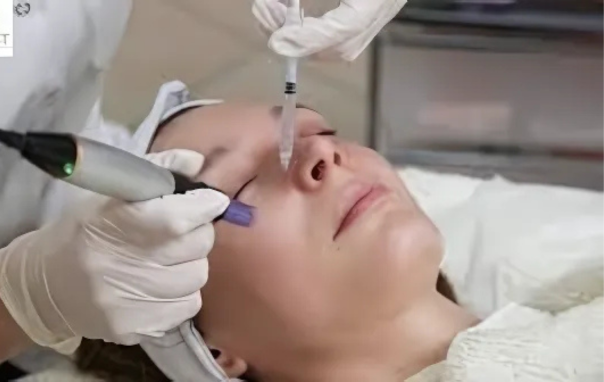
What is PRP?
Platelet-rich plasma (PRP) is a blood derivative widely recognized in cosmetic dermatology and surgical health services for its impressive healing factors. In simplest terms, PRP is a protein-rich plasma created by separating blood platelets and white blood cells from the rest of the blood components through a blood draw. These platelets contain powerful growth factors that stimulate collagen growth, cell proliferation, and elastin production, making PRP especially effective for facial rejuvenation. Unlike many filler treatments, PRP relies on your body’s own reparative cells for skin rejuvenation, meaning there’s minimal allergic reaction risk and a more natural healing processes.
How PRP Treatment Works
The Role of High-Concentration Growth Factors
When injected into facial skin, these high-concentration growth factors initiate a healing process that boosts the production of collagen and growth of collagen. The concentration of platelets is far higher than what’s found in whole blood, thus jumpstarting cell turnover and dermal fibroblasts activity. This natural treatment approach can also be used for hair growth, hair restoration, and even hair loss treatment addressing pattern baldness.
Non-Invasive Approach
Unlike invasive techniques such as full plastic surgery or maxillofacial surgery, a PRP facial is often deemed a non-invasive procedure. It’s a straightforward procedure requiring a simple blood draw, injection process, and minimal downtime. This makes PRP a favorable choice for many patients looking to improve skin tone, reduce appearance of wrinkles, and combat premature wrinkles without extended healing time or large incisions.
The Science Behind PRP
Previous studies and prospective study data in Curr Pharm Biotechnol and Skin Res Technol indicate that injections of platelet concentrate facilitate wound healing, soft tissues repair, and cell growth in human skin grafts. When activated, platelet-rich solutions release growth factors like PDGF (Platelet-Derived Growth Factor) and TGF-β (Transforming Growth Factor-beta), which encourage skin cells to renew and bolster collagen production. The inflammatory response triggered by PRP can also assist with cell turnover and potentially reduce the risk of premature skin changes caused by levels of sun damage or environmental exposure.
Procedure Overview
Blood Draw and Preparation
A PRP facial begins with a small blood sample—usually taken from your arm, much like a routine lab test. The blood is spun in a centrifuge to isolate the liquid portion containing platelet-rich plasma. This fraction of blood is high in growth factors and blood platelets, which are then readied for injection treatments.
Injection Sites
After cleansing the facial skin, your medical professional or experienced provider identifies strategic injection sites—often around the nasolabial folds, cheeks, forehead, and other areas prone to wrinkles or rough texture. Microneedling devices or an injection gun can sometimes be used to enhance penetration and healing. Because PRP is a natural treatment derived from your own body, allergic reaction or severe adverse reaction is rare, though mild swelling or mild pain can occur.
Healing Time and Aftercare
The immediate post – procedure period usually involves mild redness, some sensitivity, or minimal pain. Many facial patients can resume normal activities within a couple of days, though strenuous exercise and excessive sun exposure should be limited. Using an ice pack and counter pain relievers like acetaminophen can help minimize discomfort, while your healthcare provider may recommend specific skincare protocols to optimize skin rejuvenation.
Benefits of PRP Facials
Skin Brightness
One of the most noticeable outcomes from PRP treatment sessions is a brighter complexion. The release of growth factors prompts healthier skin cells to surface, reducing dullness and lending a luminous glow. Hyaluronic acid-based serums can further complement the rich plasma therapy by preserving moisture and promoting additional cell turnover.
Wrinkle Reduction
With increased collagen production and improved skin elasticity, fine lines and wrinkles often diminish over time. This is particularly true for nasolabial folds, marionette lines, and appearance of wrinkles along the forehead. Facial rejuvenation with PRP can help restore a youthful appearance, delaying or even preventing the need for more aggressive invasive procedures down the road.
Enhanced Texture and Tone
The benefits of platelet therapy also extend to skin texture and skin tone. Because concentration of growth factors accelerates cell proliferation, your complexion may appear more uniform, with reduced damage from sun damage, blemishes, or uneven pigmentation. Patients struggling with loose skin or areas of rough texture can notice firmer, smoother results.
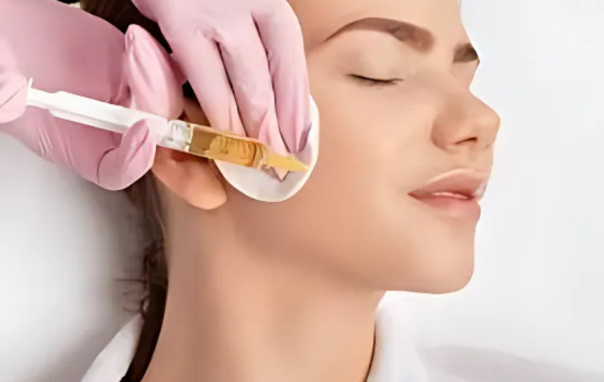
Potential Risks and Side Effects
Common Side Effects
Common side effects of PRP facials include mild swelling, redness, or bruising at injection sites. These adverse effects generally subside within a couple of days. Additional minor concerns like itching, tightness, or discomfort might appear, but can often be alleviated with an ice pack and topical soothing agents.
Rare Complications
While serious adverse reaction is unusual—especially compared to filler or plastic surgery—rare complications include infection, allergic reaction (though minimal because it’s your own blood), or delayed healing. Individuals with a history of blood diseases, compromised immune systems, or certain medical conditions should disclose these to their healthcare provider. Blood thinners may also pose a concern, affecting how your blood vessels respond to the injection process and possibly increasing bruising.
Who is an Ideal Candidate for PRP Facial?
Skin Types and Concerns
PRP is suitable for a wide variety of skin types, including those with mild to moderate sun damage, premature wrinkles, or early signs of aging. Because platelet-rich plasma harnesses your body’s own blood products, it is considered an effective treatment for those seeking a natural healing processes approach. Patients looking to address nasolabial folds, rough texture, or mild scarring from human skin conditions often benefit from a PRP facial.
Contraindications
Anyone with active cold sores, open lesions, or a history of blood diseases such as clotting disorders may need to reconsider or consult a specialist in dermatology or physician services. Also, if you have recently undergone major surgery, had a hyaluronic acid filler injection, or have other underlying medical conditions, it’s crucial to discuss these with your healthcare provider. Allergic reaction risk is minimal but still possible if you have heightened sensitivities.
Expected Results and Recovery Timeline
Early Results
Most patients begin noticing subtle improvements—like a fresher, more even-toned complexion—within the first week after initial treatment. Mild swelling or mild pain may persist for a few days, but these typically subside as reparative cells ramp up the healing process. Skin Vitality improves noticeably as cell proliferation increases.
Long-term Benefits
Between four and six weeks post-procedure, more pronounced changes such as improved skin thickness, diminished wrinkles, and enhanced hair follicles (if used for hair treatment) become evident. Results continue to evolve, with many facial patients opting for follow-up treatments or maintenance treatments spaced several weeks apart. The benefits of platelet therapy can last many months, especially when combined with other anti-aging treatments or a healthy lifestyle that avoids excessive sun exposure.
Recovery Phases
- Immediate Recovery (First 24-48 hours): Some redness, mild swelling, or bruising.
- Subacute Phase (3-7 days): Mild sensitivity and dryness; improvements in complexion may begin to show.
- Regenerative Phase (2-4 weeks): Production of collagen and growth of collagen peak, significantly enhancing skin rejuvenation and firmness.
- Maintenance Phase (1-3 months): For extended longevity, additional Facial sessions may be scheduled as part of your treatment options.
Why Choose Beauty Aesthetics, Toronto, for PRP Facial?
Beauty Aesthetics, Toronto stands at the forefront of cosmetic procedures and medical services in Canada, offering reasonable request accommodations for Eligible residents seeking PRP therapy and hair loss treatment. Their skilled providers and staff include top clinicians, some trained at leading institutes like Beacon Dermatology and Affiliated Dermatology, bringing comprehensive coverage and an in-depth understanding of human skin conditions. By harnessing the latest in microneedling treatments, injection gun devices, and advanced PRP protocols—developed through current study and Everts PA research findings—they provide safe, non-invasive procedures. Whether you’re dealing with premature skin aging, Skin cancer concerns, or simply want a brighter complexion, Beauty Aesthetics offers personalized physician services designed to restore a youthful appearance and skin rejuvenation without the extensive downtime of more invasive procedures. From pre-care instructions (avoiding hours before treatment certain medications or blood thinners) to precise injection treatments and thorough aftercare, their commitment to quality ensures each individual patient experiences optimal effects and minimal damage.
Conclusion
For those eager to see tangible, real-world before-and-after transformations, a platelet-rich plasma injection holds promise. By activating reparative cells, ramping up collagen production, and harnessing your own blood’s growth factors, PRP gives patients a potent, natural healing processes alternative to more invasive surgery. Whether addressing fine wrinkles, hair loss, or uneven skin tone, PRP can revive your complexion and result in a truly fresher, more even-toned complexion. At Beauty Aesthetics, Toronto, an experienced provider delivers this effective treatment with proven expertise, shaping a path toward long-lasting facial skin rejuvenation.
